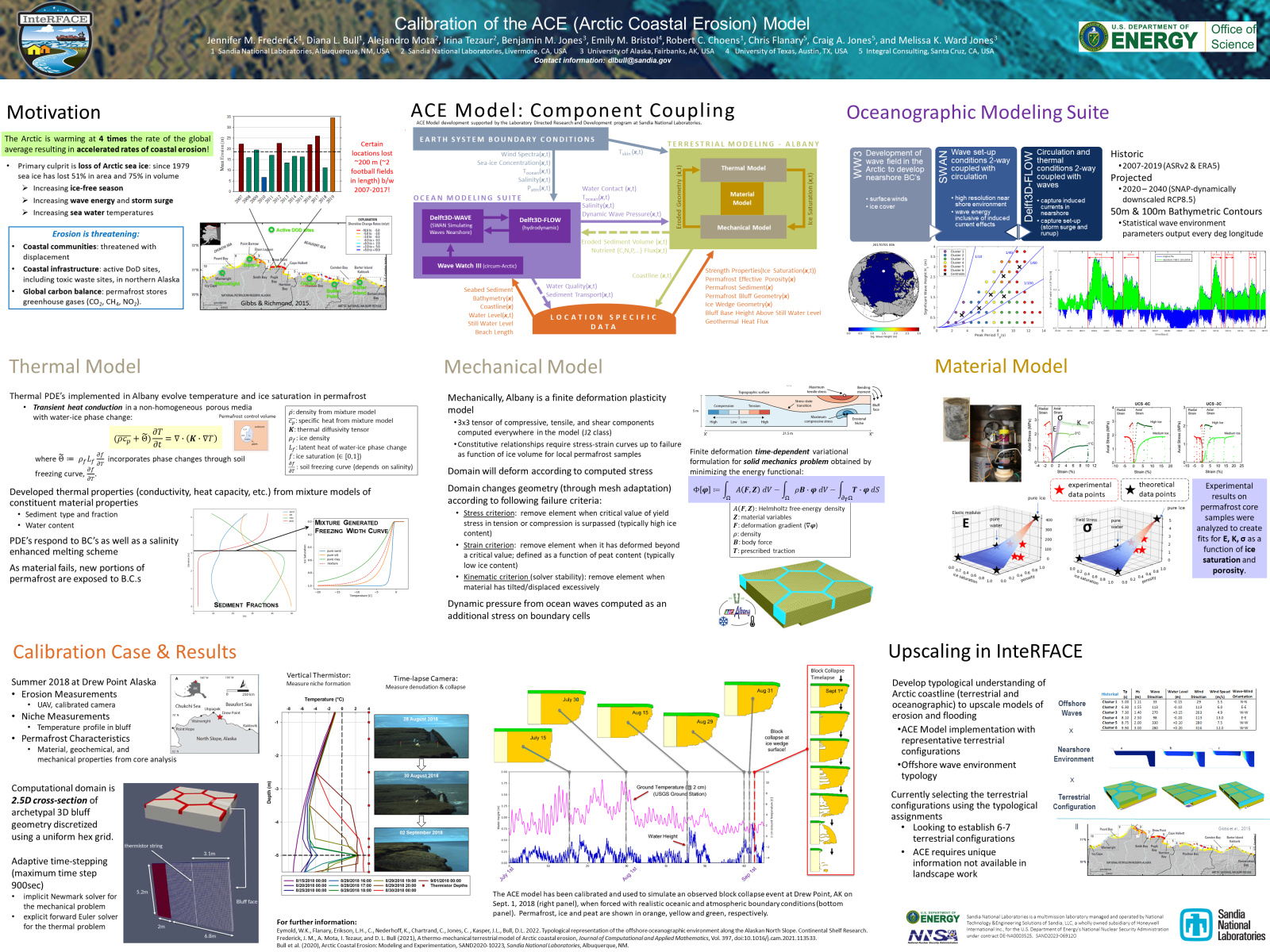15) Calibration of the ACE (Arctic Coastal Erosion) Model
 The ACE (Arctic Coastal Erosion) Model is a multi-physics numerical tool that couples oceanographic and atmospheric conditions with a terrestrial permafrost domain to capture the thermo-chemo-mechanical dynamics of erosion along permafrost coastlines. It is based on the finite-element method and solves the governing equations for conservation of energy (heat conduction with phase change), and conservation of linear and angular momenta using a plasticity material model. Oceanographic and atmospheric boundary conditions force evolution of a permafrost environment, consisting of porous media made of sediment grains and pore fluid. An oceanographic modeling suite (external software packages) produces time-dependent water level, temperature, and salinity boundary conditions for the terrestrial domain. Atmospheric conditions are obtained from reanalysis data sets (e.g., ASRv2 and ERA5). Driven by these boundary conditions, 3-D solutions of temperature, stress, and displacement develop in the terrestrial domain in response to the plasticity model that is controlled by the frozen water content. Material is removed when the stress or strain within an element exceeds the yield strength or strain limit of the material and is followed by grid adaptation that captures the new geometry. This modeling approach enables failure from any allowable deformation (e.g., block failure, slumping, thermal denudation) and can treat erosion behavior over single events, seasonally, or over several years. Results of ACE Model calibration using 2018 field data from Drew Point, Alaska is presented.
The ACE (Arctic Coastal Erosion) Model is a multi-physics numerical tool that couples oceanographic and atmospheric conditions with a terrestrial permafrost domain to capture the thermo-chemo-mechanical dynamics of erosion along permafrost coastlines. It is based on the finite-element method and solves the governing equations for conservation of energy (heat conduction with phase change), and conservation of linear and angular momenta using a plasticity material model. Oceanographic and atmospheric boundary conditions force evolution of a permafrost environment, consisting of porous media made of sediment grains and pore fluid. An oceanographic modeling suite (external software packages) produces time-dependent water level, temperature, and salinity boundary conditions for the terrestrial domain. Atmospheric conditions are obtained from reanalysis data sets (e.g., ASRv2 and ERA5). Driven by these boundary conditions, 3-D solutions of temperature, stress, and displacement develop in the terrestrial domain in response to the plasticity model that is controlled by the frozen water content. Material is removed when the stress or strain within an element exceeds the yield strength or strain limit of the material and is followed by grid adaptation that captures the new geometry. This modeling approach enables failure from any allowable deformation (e.g., block failure, slumping, thermal denudation) and can treat erosion behavior over single events, seasonally, or over several years. Results of ACE Model calibration using 2018 field data from Drew Point, Alaska is presented.
